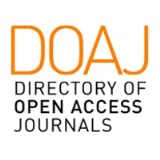TODAY I WANT TO WRITE TO YOU Project: the use of digital whiteboards in Special Education
DOI:
https://doi.org/10.58265/pulso.4952Keywords:
Interactive Whiteboard, Special Needs Education, Literacy, Reading and WritingAbstract
This article explains the experience of a group of teachers working at the Special Needs School “Miguel de Unamuno” and the Cardenal Cisneros University College, both in Madrid (Spain). The project is carried out with a group of mentally disabled children, with levels of disability ranging from moderate to severe. These professionals try to prove that interactive whiteboards can facilitate the task of elaborating activities and, at the same time, reinforce the learning of reading and writing processes, improving the development of some linguistic skills. Interactive whiteboards, in comparison with traditional methods, can help students overcome many reading and writing limitations.
Downloads
References
AGUADED, JI. Y CABERO, J. (2002). Educar en red: Internet como recurso para la educación. Malaga: Aljibe.
BEELAND, WILLIAM D. BEELAND, JR. VALDOSTA STATE UNIVERSITY (2002). Student engagement, visual learning and technology: can interactive whiteboards help? En [consulta 5/2005].
BELL, MARY ANNE, SAM HOUSTON STATE UNIVERSITY (2002). Why Use an Interactive Whiteboard? A Baker’s Dozen Reasons! Teacher’s Net Gazette, 3 (1) January. En http://teachers.net/gazette/JAN02/mabell.html [consulta 5/2005]
BUTCHER,K y SCRUGGS,TE., (2001) En Journal of Special Education Vol35 /No.2/2001/ pp 100-104.
COLL,C. Y ONRUBIA,J. (1999) Discusión entre alumnos e inß uencia educativa del profesor. En Rev. Textos. MonográÞ co: La discusión como instrumento de aprendizaje; 20/1999;19-39. Ed Graó.
CUETOS Vega, Fernando. (1990) Psicología de la lectura ( Diagnóstico y tratamiento de los trastornos de escritura) .Madrid. Escuela Española.
DEL CAMPO ADRIAN, Mª ELENA. (1997). Casos prácticos de diÞ cultades de aprendizaje y necesidades educativas especiales. Diagnóstico e intervención psicoeducativa. Centro de Estudios Ramón Areces. Madrid.
DÍEZ VEGAS, C. y PARDO DE LEÓN, P. (2000). Curso de experto Universitario en Lenguaje Escrito en Educación Infantil: Estrategias de trabajo en grupo. Madrid: UNED.
DÍEZ,C., PARDO DE LEÓN,P., LARA,F., ANULA,JJ Y GONZÁLEZ,LMª. (1999). La interacción en el inicio de la lectoescritura. Madrid. Ministerio de Educación y Cultura.
DULAC, J Y ALEONADA, C (2006). Informe de investigación Iberian Research Project UNED y Smart.http://www.dulac.biz/Iberian%20research/IberianResearchProject.htm [Consulta 7, 2006].
GONZÁLEZ PÉREZ, J. (2002). Necesidades educativas especiales e intervención psicoeducativa. Alcalá de Henares: Universidad de Alcalá de Henares, Servicio de Publicaciones
LACASA, P., ANULA, J. y MARTÍN, B. (1995). Leer y escribir con sentido: ¿Cómo lograrlo desde la perspectiva del lenguaje integrado? En Comunicación, Lenguaje y Educación (25, 31-49).
MAJÓ CRUZATE, J.; MARQUÈS GRAELLS, P. (2001). La revolución educativa en la era Internet. Barcelona: CissPraxis en http://dewey.uab.es/pmarques/libros/revoledu.htm. [consulta 5/2005]
MARQUÈS GRAELLS,P.; CASALS BOSCH, P. (2002). La pizarra digital en el aula de clase,
una de las tres bases tecnológicas de la escuela del futuro. Revista Fuentes, Universidad de Sevilla. En http://dewey.uab.es/pmarques/pizarra2.doc [consulta 5/2005]
MARQUÈS GRAELLS, P. (2002). La pizarra digital en los contextos educativos. En http://dewey.uab.es/pmarques/pizarra.htm.[consulta 5/2005]
MARQUÈS GRAELLS,P.; CASALS BOSCH, Pilar (2002). La pizarra digital en el aula de clase, una de las tres bases tecnológicas de la escuela del futuro. Revista Fuentes, Universidad de Sevilla. En http://dewey.uab.es/pmarques/pizarra2.doc [consulta 5/2005]
MARUNY C. L., MINISTRAL M. M. y MIRALLES T. M. (1997). Escribir y leer. Zaragoza: Edelvives.
MERCER, N. (1996). La construcción guiada del conocimiento. El habla de profesores y alumnos. Barcelona: Paidós.
NUSBAUM, L. (1999). La discusión como género discursivo y cómo instrumento didáctico. En Rev Textos. MonográÞ co: La discusión como instrumento de aprendizaje; 20/1999; pp 19-39. Ed Graó.
SÁNCHEZ MONTOYA, R. (2002). Ordenador y discapacidad guía práctica de apoyo a las personas con necesidades educativas especiales. Madrid: CEPE.
SÁNCHEZ MONTOYA, RAFAEL (2000). El papel de las nuevas tecnologías en la estimulación de las inteligencias de las personas con necesidades educativas especiales. Pdf. En http://www.ordenadorydiscapacidad.net/ [consulta 5/2005]
TEBEROSKY, A. (1999). Aprendiendo a escribir. Barcelona: Horsori.
Downloads
Published
How to Cite
Issue
Section
License
Copyright (c) 2022 Pulso. Revista de educación

This work is licensed under a Creative Commons Attribution-NonCommercial-NoDerivatives 3.0 Unported License.
This journal offers immediate open access to its content based on the idea that offering readers free access to research favours a global exchange of knowledge.
Papers are published in the electronic version of the journal under a Creative Commons License: Attribution-NonCommercial-No derivatives 4.0 International
Authors are allowed and encouraged to promote the post-print version (reviewed and accepted for publication version) of their work online before publishing them. This favours their earlier circulation and dissemination and thus a possible increase in their citation and reach among the academic community.













